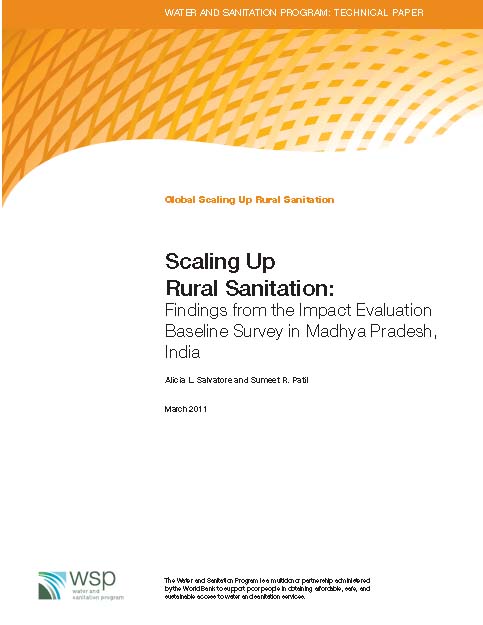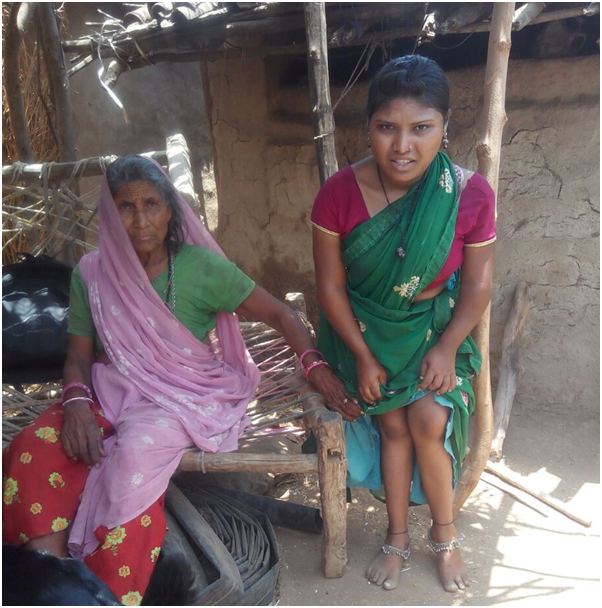Dhar District
A watered-down scheme
Posted on 16 Feb, 2017 12:25 PMIn November 2011, the government of Madhya Pradesh sanctioned Rs 493 crore to 37 Urban Local Bodies (ULB) for drinking water supply projects under the Chief Minister’s Urban Drinking Water Supply Scheme (CMUWSS) along the lines of the Urban Infrastructure Development Scheme for Small and Medium Towns (UIDSSMT).

How water brought a village together
Posted on 11 Jun, 2016 04:11 PMBankpura village is in Mehgaon gram panchayat in Dharampuri block in district Dhar of Madhya Pradesh. It is situated 26km away from the sub-district headquarters, Dharampuri, and 68km away from the district headquarter, Dhar. Dhamnod is the nearest town to this village which is approximately 7km away.

Using community support to battle fluoride contamination
Posted on 08 Dec, 2015 09:17 PMWhat is the exact problem as regards fluoride contamination in Madhya Pradesh, particularly in Dhar district?

Why did Urmila have to suffer?
Posted on 27 Jul, 2015 08:11 PMUrmila can neither walk upright, nor run about, nor do her chores easily. She is loved in her parents' house and they do not grudge her the extra care she requires. In rural India, this state of affairs does not last long for a girl, especially since she's only six years old.

How Bandu Singh recovered hope
Posted on 08 Jul, 2015 09:27 PMBandu Singh, a lean old man aged around 60, has spent his entire life living in a small mud house in Kaalapani, a small village located in Manawar block of Dhar district, Madhya Pradesh. Kaalapani has a population of 849 people of which 99.41% (as per Census 2011) are listed as belonging to Schedule Tribes (ST).
The area

Rs. 20,000 crore sanctioned for Ganga clean-up
Posted on 19 May, 2015 09:17 AMCentre okays Rs 20,000 crore for the 'Namami Gange' programme

Fluorosis mitigation in Dhar, Madhya Pradesh: Experiences of monitoring fluoride levels in drinking water and human urine, and implementing mitigation measures
Posted on 04 May, 2012 08:48 AMBackground:
62 million people in India, including 6 million children suffer from fluorosis. The root cause of this is excessive fluoride (>1.5mg/l) in groundwater, as is found in 20 states across India.
Objectives:
Scaling up rural sanitation: Findings from the impact evaluation baseline survey in Madhya Pradesh – A report by the Water and Sanitation Program of the World Bank
Posted on 18 Apr, 2011 08:20 AM This report by the Water and Sanitation Program (WSP) of the World Bank presents the findings of the baseline and community survey conducted in two districts of Madhya Pradesh (MP) - Dhar and Khargone. The goal of the program is to reduce the risk of diarrhea and therefore increase household productivity by stimulating demand for sanitation in the lives of people. The program also seeks to stimulate the supply of appropriate sanitation program and services by conducting market research and training local artisans to build the relevant facilities.
This report by the Water and Sanitation Program (WSP) of the World Bank presents the findings of the baseline and community survey conducted in two districts of Madhya Pradesh (MP) - Dhar and Khargone. The goal of the program is to reduce the risk of diarrhea and therefore increase household productivity by stimulating demand for sanitation in the lives of people. The program also seeks to stimulate the supply of appropriate sanitation program and services by conducting market research and training local artisans to build the relevant facilities.
In India, the program is supporting the Government of India’s (GoI) Total Sanitation Campaign (TSC) in two States: Himachal Pradesh and Madhya Pradesh. The main components of the intervention include: Community-Led Total Sanitation (CLTS), Social Marketing of Sanitation, Strengthening the Enabling Environment and Nirmal Gram Puraskar (NGP) Awards.

